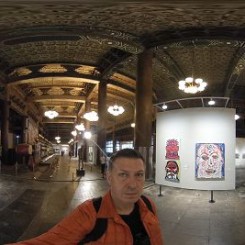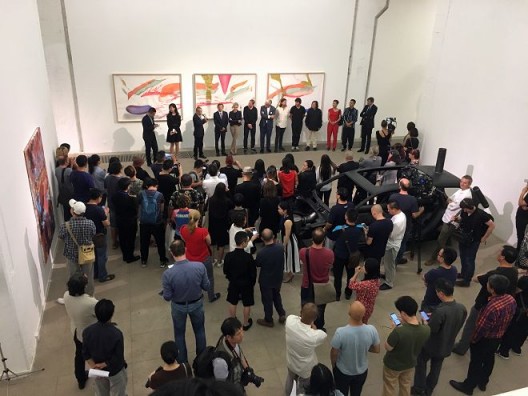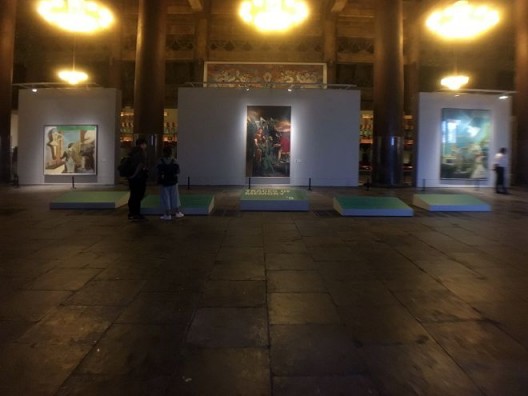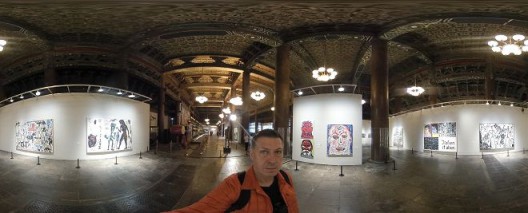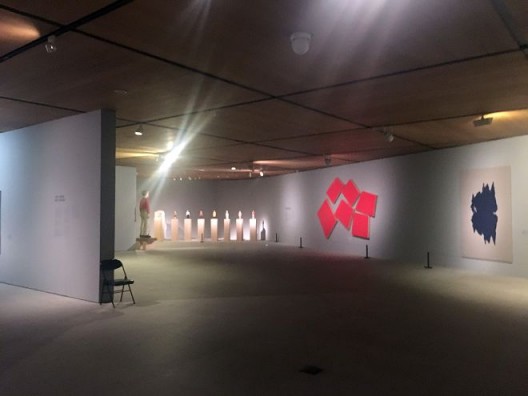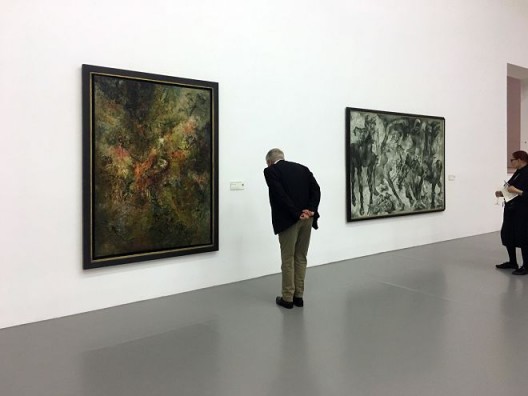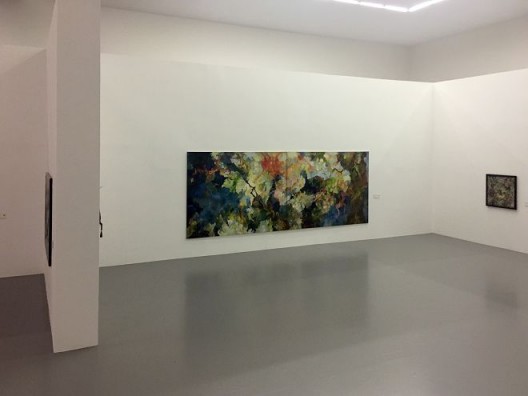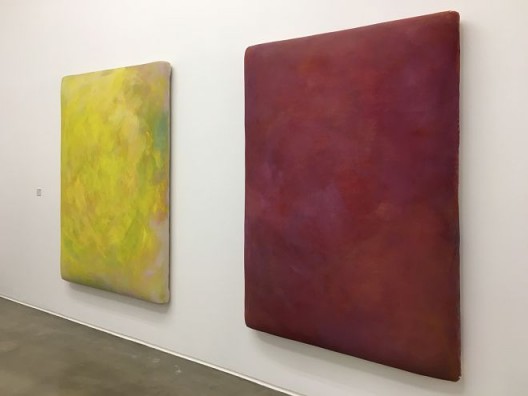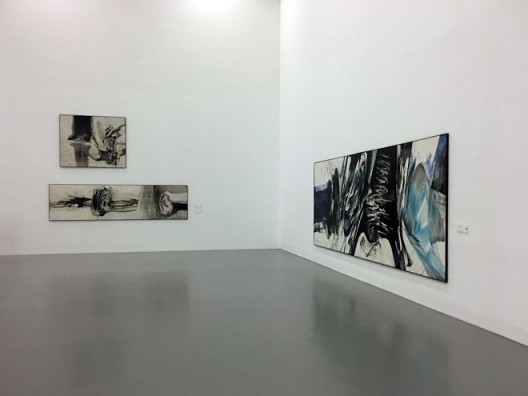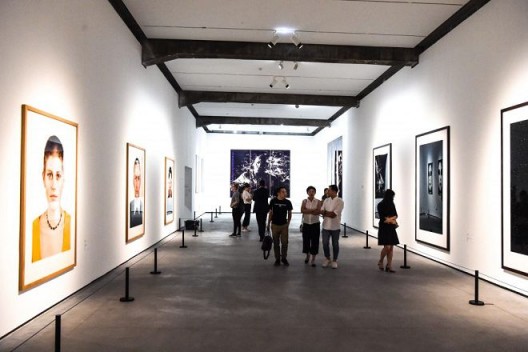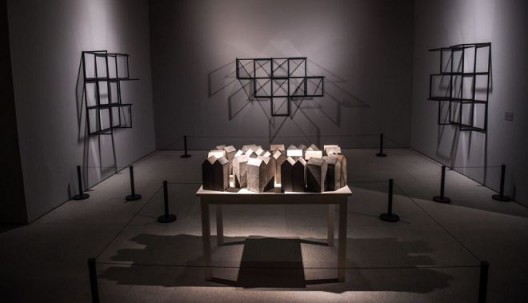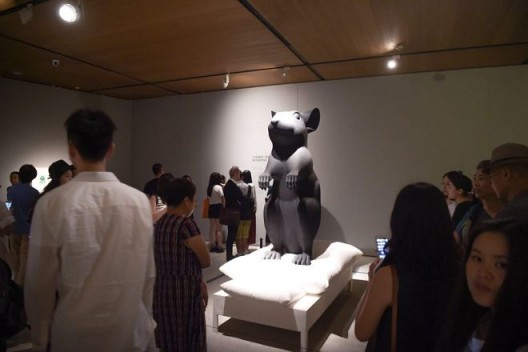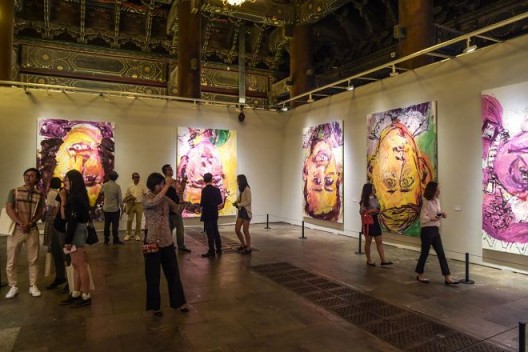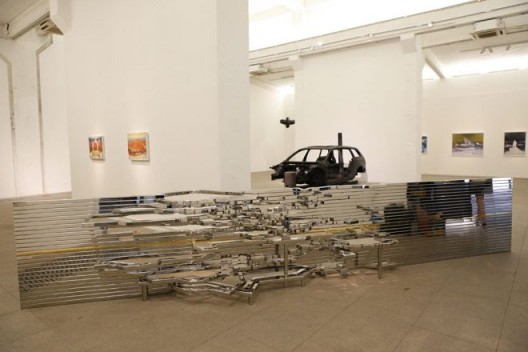Deutschland 8 (various venues in Beijing)
From September 15 to October 31, 2017, 55 artists and 320 artworks from Germany were shown in seven different museums (Taimiao Temple, CAFA Museum, Minsheng Museum, Today Art Museum, Redbrick Museum, Yuan Art Museum and Whitebox Museum) in Beijing and one day of conference—7 + 1 = 8, the lucky number in China, which in turn legitimizes the name. The organizers claim that the exhibition project attracted 500 000 visitors in 6 weeks. The show seems to be all about numbers…
But praise first: It was an almost impossible feat to bring this many artworks by some of the best artists from Germany to Beijing in a very short time since its early planning stages—a huge diplomatic success that found support by many private and corporate sponsors, as well as the Chinese and German governments. How else would one manage to solve the insurmountable problem of temporary import procedures to the PRC considering the value of the artworks by some of the most successful artists in Germany?
Deutschland 8 is an exhibition project spanning seven locations in Beijing that—so the organizers claim—comprehensively presents the entire development of art in Germany from 1945 up to now. But which Germany? Up until 1990 Germany was a divided country, and yet in the exhibition there was NO account of what happened in the arts in Communist Germany (German Democratic Republic)—zero.
Secondly, upon entering the Taimiao Temple in Beijing’s Forbidden City, one of the venues of the show, the first artist you see is Neo Rauch. Think of his work however you want, but is he really the most important German artist since 1945? Joseph Beuys is cast aside in the same location and represented by a handful of drawings and a poster. Seriously! Is this how you treat one of the most seminal artists of Germany in a big “survey show” in China?!
But it is only getting started. Walking around the temple, one fails to find the works by Gerhard Richter, Sigmar Polke, Anselm Kiefer, the big three in the German art world. And it so turns out their works were placed in another temple just behind the first one. Whatever the reason for? Might it be that the second temple is air-conditioned, and the first one not? So the higher valued artworks had to be relegated to the second row: curating by climate control. In the absence of any kind of guidance, reading materials, or knowledgeable guards, what is a curious and eager visitor to think—left alone just like this and without even a trace of consideration on the part of the curators how to present the work.
Third problem: I kind of understand the megalomaniac desire to connect with as many institutions in Beijing—in order to feel super-important oneself. And during the three opening days it was fascinating to see that the same seven museum directors in Beijing were going to the openings of all other locations…I would assume that never before or after would this group ever spend so much time with each other listening to the same speeches made by the show’s two curators Walter Smerling and Fan Di’an. Yet if you divide the show up into different venues, it is very difficult for an audience to see the connections and subtle influences across generations and mediums. It is baffling (and borders on nonsense) to think the audience would get a clearer picture if you put photography into one museum, contemporary art into another, postwar in yet another. To use an analogy: this is a little bit like trying to organize a concert with the oboes in one building, the violins in another, and the percussion out on the street.
Oh why oh why is it that AR Penck is in the Taimiao Temple and his friend and longtime collaborator Jörg Immendorf is in the CAFA museum? That is plainly ridiculous. And don’t get me started on the non-sensical presentation of German photography at the Minsheng museum; the artist Katharina Sieverding, who had somewhat naively been convinced to participate, was fuming for days while in Beijing. I will spare more delicate readers from the precise words she used.
Red Brick Museum is home to a very fine presentation of German postwar abstraction. Excellent works! Yet again some important artists missing: Ernst Wilhelm Nay being one of them. Looking at the artwork labels at least revealed the curatorial principle, if that is what you wanted to call this act of blatant recklessness. All the works were from the Küppersmühle Museum, where Mr. Smerling is director. The artworks are part of the famous Ströher collection in Germany; Mr Karl Ströher was heir to a huge German beauty products manufacturer and one of the biggest patrons of art in the 1960s and 70s. He bought the best of the best. It is just really sad that the lighting at Redbrick Museum was so dull, that one could hardly see the brilliance of the works brought all the way from Germany.
Looking at other labels in other museums, it became clear what the curatorial principle was: who do I know who can give me artworks in bulk and who is eager to have his collection featured in this mega project? The opening ceremony saw a lot of retired museum directors and old collectors. All had been flown in for the day—one day, on the plane of Sigmar Gabriel, Germany’s foreign minister—only to return to the airport directly after the opening ceremony. If that were an artist’s performance piece, it would actually have been entertaining. The sad truth from reading the wall labels, however, was that the most telling experience of the Deutschland 8 project is this: Cronyism as curatorial principle.
Similar things could be said about the presentation of new media art at the Today Art Museum or Contemporary Art at White Box, where work had just been senselessly shoved into the space. Maybe one last observation: Katharina Grosse tried to ennoble her fuzzy oversized paintings, juxtaposing them with the works of Gotthard Graubner, her teacher. This prompted one of the more influential people in Beijing’s art world to say: “Gotthard Graubner is really, really interesting, and those … (looking at Grosse) … are really big. How did they transport them here?!” Just how pretentious and how obvious Grosse’s move was became clear.
I have never seen such neglectful curating. Utter disrespect for the artists and the audience! There was no instance where I could detect an intelligent combination of artworks—one that would give the audience the chance to see why certain artist were closer to one another, how they influenced each other, or how they were in competition. No moment of at least attempting to recount important exhibitions in the development of art in Germany. The show did not bring artworks; the show brought an artists list to Beijing—and one that has big gaping holes in it too. There is no story told, the choice of works completely random, and no effort spent on mediating cultural differences and artistic ideas.
I guess curating is much like parenting; nobody needs a license for that. But if Deutschland 8 were a child, you would want to sue the parents for gross neglect and wanton conduct.
